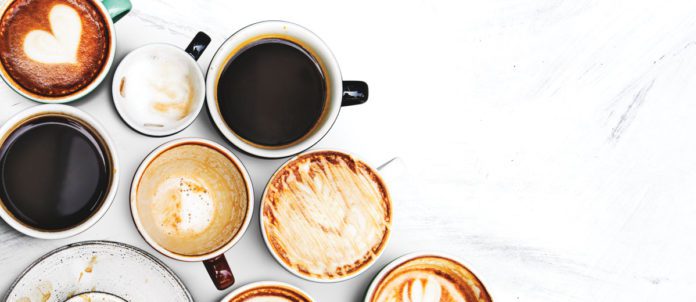Foodservice coffee sales are still feeling the impact of shifts caused by COVID-19. According to Toronto-based The NPD Group, Canadians had already begun consuming more of their coffee at home prior to the pandemic, and this trend was accelerated by the crisis, with Canadians continuing to invest in coffee appliances “at unprecedented levels.
While there has been some recovery from the steep losses in 2020, NPD data shows coffee servings down 22 per cent from pre-pandemic levels for the year ending November 2021.
“Before March 2020, coffee servings were already softening a bit for out-of-home; therefore, it’s unlikely that foodservice coffee will ever reach pre-pandemic levels again,” says Vince Sgabellone, foodservice industry analyst at The NPD Group.
That said, Canadians have a special relationship with their morning coffee and that’s unlikely to change. The key is for foodservice establishments to meet customers where they are with the format that meets their needs.
In this environment, there is increased focus and value placed on providing streamlined service and a wider variety of access points to facilitate convenience. For the large chains in particular, this includes expansion and innovation of drive-thru services.
As Matt Moore, Tim Hortons’ COO, shared during the company’s Canadian Investor Day this year, “Drive-thrus are critical service modes for our restaurants. We believe the addition and conversion of drive-thru lanes is one of the most powerful comparable sales drivers.”
And the brand’s strategy reflects this. In the last year, Tim Hortons has installed digital menu boards at drive-thrus across the county, converted several locations to include drive-thru and added second lanes where possible. “We’re also testing express drive-thru lanes for mobile ordering and tandem drive-thrus with two menu boards in a single lane to facilitate faster speed of service,” Moore adds.
Starbucks has also focused on the development of new drive-thru locations, which represented 90 per cent of its recent new-store growth. Starbucks Corp. interim CEO Howard Schultz also noted plans to introduce innovations in this channel during the company’s Q2 2022 results call. “Our newest class of drive-thrus will integrate new store designs, technology, including more handheld devices and equipment improvements that will increase efficiency, speed of service and deliver even greater profitability in the future,” he shared.
Sustainable Sipping
Finding suitable sustainable alternatives to single-use cups remains a key area of focus and innovation for Canada’s coffee purveyors, with several of the top players testing new solutions in 2021/22.
Building on an earlier pilot in Ontario, Tim Hortons launched a new reusable-cup pilot project in Vancouver in May. Working in partnership with Return-It, select restaurants offered guests the option of paying a deposit of $4 (plus tax) for a re-usable and returnable cup.
Last September, A&W Canada launched an exchangeable-cup pilot in Vancouver through a partnership with The Coca-Cola Company. Dubbed The A&W Cup Crew, the program offers guests re-usable cups that can be used for both hot and cold drinks for a deposit of $3.As Julia Cutt, director, Brand Communications & Digital Marketing, A&W Food Services of Canada Inc., explains, these cups are cleaned onsite, making use of back-of-house equipment already in place. “Because we have restaurants with re-usable dishware already…this fit seamlessly into the operation side,” she explains. “Restaurants just add the Cup Crew cups to the dishwasher as they’re doing dishes throughout the day.”
On the guest side of this program, Cutt notes “A lot of guests love the idea,” but it takes time for them to build the habit of bringing the cup back at their next visit.
Beyond re-usable solutions, these brands have also been exploring and introducing more sustainable single-use options. This includes Tims’ introduction of white hot-beverage lids (in select restaurants) earlier this year and expanded testing of a plastic-free fibre lid.
In March, A&W Canada also began a pilot of the unique Zero Cup. The lidless design, from U.K.-based ButterflyCup, is plastic-free and fully compostable and recyclable. Cutt notes the brand is continuing to explore and refine compostable-cup solutions, pointing to these single-use options as “the stepping stones to get [to zero waste], especially as guests get used to re-usable [solutions].”
Embracing the Chill
On the menu side, cold beverages remain a key area of development and growth. As Katie Belflower, associate editor at Technomic, shares, “Iced coffee drinks are especially showing growth, with iced Americanos (up 61.5 per cent), iced coffee (up 37.2 per cent), iced lattes (up 29.3 per cent) and iced cappuccinos (up 27.6 per cent) all increasing on [Canadian] menus in the last year.”
“Cold beverages represent a $4.5-billion market in Canada and are critical to our efforts to modernize the brand and be relevant to that younger guest,” notes Tim Hortons’ Chief Marketing Officer Hope Bagozzi.
Cold foam — originally popularized by Starbucks — has become increasingly prevalent in this category, with Tim Hortons and Second Cup introducing their own takes, including Second Cup’s vibrant Blue Cold Foam Espresso.
Fruit-based beverages have also continued to establish themselves as a key element of café’s cold-beverage programs, with a number of prominent menu additions.
This summer, Starbucks expanded its fruity and colourful Refreshers lineup once again with the Pineapple Passionfruit and Paradise Drink Starbucks Refreshers beverages. Tim Hortons also updated its Quenchers platform, which debuted in 2021. The new additions incorporate tea and fruit flavours, including the Freshly Brewed Iced Tea Quencher (green tea with accents of tropical fruits and blackcurrant) and Passionfruit Tea Lemonade Quencher.
A&W accounted for the popularity of cold beverages when it designed its Brew Bar menu, which began rolling out nationally in 2021, offering a variety of frozen and iced drinks.
“The frozen beverages especially have been really well received, [including] the smoothies, then the frozen mixed drinks with root beer and coffee drinks,” says Cutt. “It’s been surprising to us how steady the sales of those beverages have been [year-round].”
By Danielle Schalk


















